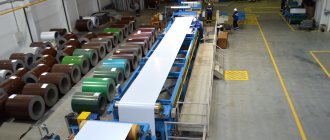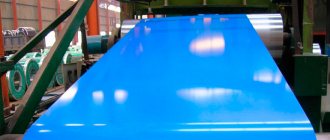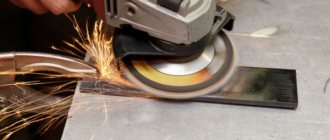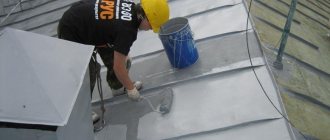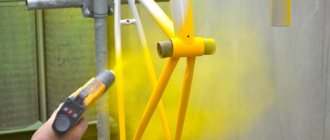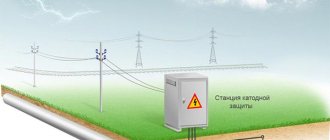- Polymer coatings: types
- Anti-friction coatings as a type of polymer
- Features of polymer coatings
- Application technology
The use of polymer coatings allows you to protect metal surfaces from corrosion, mechanical damage, external, chemical and other influences. They are powdery substances based on various resins and polymers.
Where are polymer metals used?
Areas of application:
- shipbuilding;
- mechanical engineering;
- assembly of various equipment.
Metal structures are made from individual parts that will be installed in water or places with high humidity levels.
Polymer metal in mechanical engineering (Instagram / bazz_linser)
Painting technology: what's the point?
Powder coating is applied in several stages. At the first stage, the surfaces are processed. It is very important that metal products are thoroughly cleaned of dirt and oxides, and degreasing the surface will promote improved adhesion. After preparation, the masking stage is performed, that is, those elements of the metal product that should not be exposed to the powder composition are hidden.
The parts to be processed are loaded onto a transport system and then sent to the painting booth. After spraying, a powder layer is formed on the metal. At the polymerization stage, a coating is formed, which is a melting of a layer of paint.
Types of polymer layer
Varieties:
- PVDF (polyvinylidene fluoride). Advantages: resistance to fading and mechanical damage, adding shine to surfaces, increasing the service life of metal parts.
- Pural. It is made on the basis of polyurethane. Advantages: Resistance to high heat, ultraviolet radiation and chemicals. Disadvantage: susceptibility to plastic deformation.
- Polyester. Advantages: resistance to ultraviolet radiation, moisture, and chemicals. The composition has high flexibility and can withstand temperature changes.
- Plastisol. After the work, a thick layer is formed. It has the highest resistance to mechanical damage and temperature changes.
Car wheel with polymer coating (Instagram / ilber.aktobe)
Anti-friction coatings as a type of polymer
A special type of polymer coatings is antifriction solid lubricant coatings (ATSC). They are similar to paints, but the dye is replaced by tiny particles of solid lubricants distributed throughout the volume of the binder and solvent.
For the production of polymer ATSP, polytetrafluoroethylene (Teflon, PTFE), molybdenum disulfide, graphite and other solid lubricants are used. Both organic and inorganic materials can act as a binder: titanate, epoxy resin, acrylic, polyamide-imide, phenolic, etc. Components.
In Russia, the company is engaged in the development and production of such materials. The product line includes anti-friction solid lubricant coatings designed to solve various problems, cleaners and special solvents.
MODENGY polymer coatings - MODENGY 1010, MODENGY 1011, MODENGY 1014 and others - have proven themselves in plain bearings, sliding guides, gears, other medium- and heavily loaded sliding friction units, fasteners and threaded connections, vehicle engine parts (valve rods, piston skirts, throttle valves, main bearings, spline joints), pipeline fittings, metal and plastic elements of automotive equipment (staples, springs, hinges, locks, adjustment mechanisms, etc.), as well as other metal-polymer friction pairs, metal -rubber, metal-metal, polymer-polymer.
Advantages of MODENGY polymer coatings:
- Operability in dusty environments, vacuum and radiation
- Low coefficient of friction
- High anti-wear, anti-corrosion and extreme pressure properties
- Wide operating temperature range
- Resistant to acids, organic solvents, alkalis and other chemicals
- The ability to create a thin protective layer on parts that practically does not change their original size
MODENGY polymer coatings make it possible to effectively control friction, increase the service life and efficiency of equipment, and provide the surfaces of parts with the necessary set of protective and tribological properties.
Thanks to the use of MODENGY ATSP, plastic oils and lubricants can be completely eliminated. Solid lubrication technology allows you to create a friction unit that does not require maintenance. Anti-friction coatings are applied once and provide lubrication and protection of various parts throughout their entire service life.
Advantages and disadvantages of polymer metal
Positive sides:
- High level of adhesion. If metal surfaces are properly prepared, a bond is formed between them and the polymer at the molecular level.
- Resistant to moisture. Polymer coatings are applied to metal structures located in water, and they cover the bottoms of boats. Even with active use, the protective layer retains its integrity and does not allow moisture to pass through.
- High wear resistance, mechanical strength. The damaged layer is easy to restore.
- Resistance to ultraviolet radiation. Many metal paints quickly fade in the sun. The polymer layer is not subject to this problem. It can be constantly exposed to sunlight without losing its properties.
- Resistant to temperature changes.
- Durability. Under normal conditions the coating will last about 50 years
- Resistant to chemicals. To test this property, you can coat a metal part with a polymer and immerse it in a solvent. The protective layer will preserve its integrity and properties.
Flaws:
- Due to its high adhesion, the coating is difficult to remove.
- Protective compounds are only suitable for working with metal.
- To apply polymers you need to use special equipment.
Polymer coatings can withstand exposure to open flames. This is due to the application technology.
Car made of polymer metal (Instagram / pokraska_diskov_astana)
Polyester cover
Quite often, Russian manufacturers choose polyester, also called polyester, for coating metal products. It is distinguished by high resistance to ultraviolet rays and the ability to resist metal corrosion. In addition, due to its good flexibility, the material is easy to mold, and equipment with a polyester layer can operate in almost any climatic conditions.
This inexpensive material, in comparison with other types of coatings, does not have very high strength characteristics. Sprinkling polyester with quartz sand improves them, but the price of metal coated with polymers in this case will be slightly higher. At the same time, transportation of such sheets will be complicated by the ability of sand to scratch adjacent surfaces.
Application of a polymer layer
The polymer layer is applied using special equipment in industrial chambers.
Polymer application conditions
Features of the work:
- The humidity level in the treatment area should not exceed 60%.
- Work must be carried out in a sealed chamber.
- It is necessary to clear the work area of foreign objects in advance.
- The part must be secured.
Do not apply a protective coating outdoors, in dirty rooms with a lot of dust and debris.
Metal preparation
To increase the adhesion of plastic to metal, surfaces must be properly prepared. They need to be cleaned of dirt and wiped with a solvent to remove grease stains. Treatments to remove plaque can be done chemically, thermally or mechanically. It is important to make the surfaces smooth and remove dirt.
Mixing and applying the polymer composition
The polymer composition can be mixed with callers to change color. Coating:
- The lighting in the sealed chamber is turned on. The master dresses in a chemical protection suit.
- The parts are hung on hooks or clamped in special fasteners.
- A negative cable, called ground, is hung on the workpieces.
- The camera with the master closes, he applies paint.
The application process should be slow. It is important to apply the coating evenly over the surfaces to avoid unevenness.
Application of polymer coating (Instagram / ilber.aktobe)
Thermal stabilization of polymer metal
After applying the paint, the part is slowly heated to change the properties and characteristics of the material. The workpieces are immersed in a special chamber, which is heated to 200°C. The duration of thermal stabilization is 60 minutes. After this, you need to turn off the oven and leave it to cool to 100°C. When it cools down, you can open the chamber. If you try to cool the parts forcibly, the protective layer will crack.
What's the point?
To improve the performance properties of the metal, polymers are used that can react under certain conditions. Such coatings are dry compositions based on finely dispersed powder, to which hardeners, fillers and pigments are additionally added. It was not by chance that the polymer coating was chosen to increase the protective properties of the metal: metals conduct electric current, as a result, the charge is transferred to the product, resulting in the formation of an electrostatic field. It attracts powder particles, holding them on the surface of the workpiece. The peculiarity of the polymer coating is its high degree of resistance to any type of impact. Moreover, it is aesthetically pleasing.
Recommendations for working with polymer metal
Tips for using polymer coatings for metal:
- Before applying the polymer, you need to prepare the working chamber - install effective lighting, remove unnecessary objects.
- When carrying out work, you must use a chemical protective suit, a breathing mask, and safety glasses.
- Coating is repeated 3 times.
You can paint several parts at the same time, but this requires a spacious painting booth and a furnace for thermal stabilization.
The polymer layer on the metal reliably protects the material from the formation of rust, levels the surfaces, and makes them stronger. The effect depends on the correct preparation of the working surfaces and the application of the polymer layer.
How does polymerization take place?
The powder coating shop consists of several sections:
- Product preparation area: in order for the polymer coating to be applied correctly and evenly, the metal product is first thoroughly cleaned of dust, rust, and dirt. It is advisable to use effective sandblasting and phosphating. A mandatory step is degreasing the metal surface.
- Spray booths: The spray booth is where the actual painting is done. The chamber is thermal, it can heat up to a temperature of 200 degrees and warms up evenly. The powder begins to melt, due to which an even and smooth coating is formed over the entire surface of the metal, and its pores are filled.
- Polymerization of the product is carried out in a cooling chamber: here the temperature gradually drops and the polymer film becomes harder. After 24 hours, the polymer coating is ready for use.
